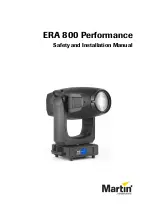
Triggering
3
2
1
4
5
6
7
8
9
10
11
12
13
14
15
16
17
18
19
App
Index
6-19
IM 701310-01E
Explanation
This function enables the DL9000 to trigger in the following conditions.
• When the state condition is met or not met
• The DL9000 checks the state condition on the rising or falling edge of the specified
clock source signal. The DL9000 triggers when the normalized condition (high when
the state condition is true and low when the state condition is low) changes.
CH1 to CH4
Clock Source
You can select the clock source from CH1 to CH4. If you do not specify the clock source,
the DL9000 only triggers based on the state condition.
If you specify the clock source, the DL9000 triggers on the relationship between the clock
source rising and falling edge and the specified state condition.
Timing to Check the State Condition
You can set when to check the state condition based on how the clock source signal
changes.
When the clock source signal changes from below the set level to above the set level
(rising edge)
When the clock source signal changes from above the set level to below the set level
(falling edge)
Enter
When the clock source level enters the specified voltage range (when window
comparator is ON)
Exit
When the clock source level exits from the specified voltage range (when window
comparator is ON)
State Condition
Set each signal state to H, L, or X. The state condition is true when the selected state
and the input signal state meet the following logic.
H
When the signal is high
L
When the signal is low
IN
When the signal level is within the set voltage range
(when the window comparator is ON)
OUT
When the signal level is outside the set voltage range
(when the window comparator is ON)
X
Not used as a trigger condition (Don’t care)
Note
You cannot set the qualification for the clock source signal.
Logic
Select the logic to apply to the state conditions: AND or OR. The state condition is true
when the logic is true.
AND
When the state of all signals matches
OR
When the state of any signal matches
False-to-True Condition Change or the True-to-False Condition Change
Select when to activate a trigger based on how the normalized condition changes.
Enter
When the normalized condition changes from false to true
Exit
When the normalized condition changes from true to false
Level
The selectable range is the same as that of the edge trigger. See section 6.6 for details.
6.8 Activating a Trigger on a State Condition
















































